
All categories
Featured selections
Trade Assurance
Buyer Central
Help Center
Get the app
Become a supplier

(167 products available)
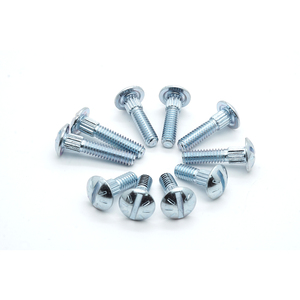
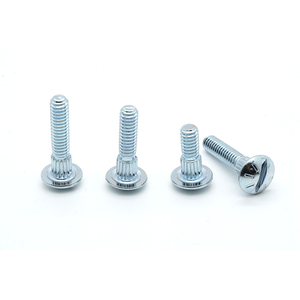


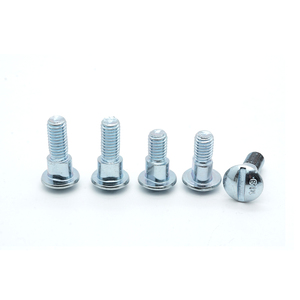

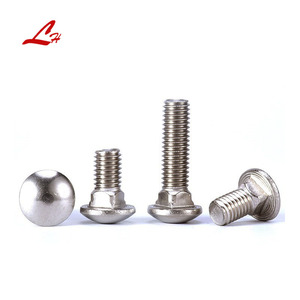
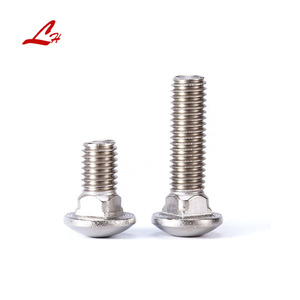
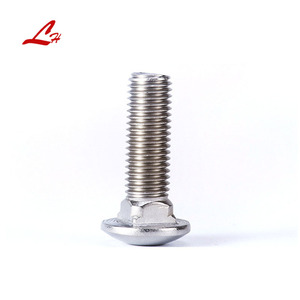
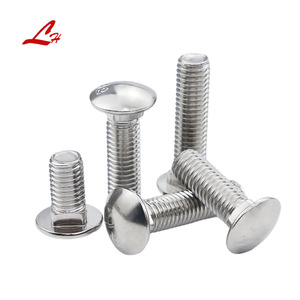




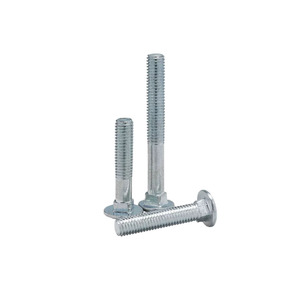

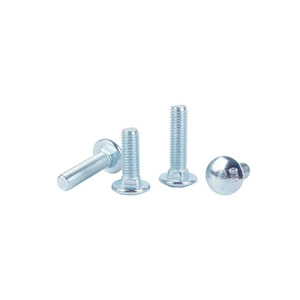



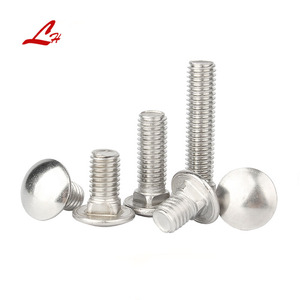
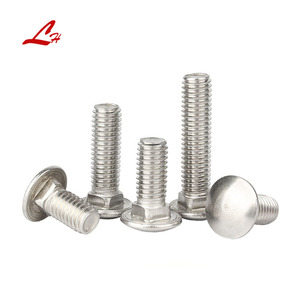


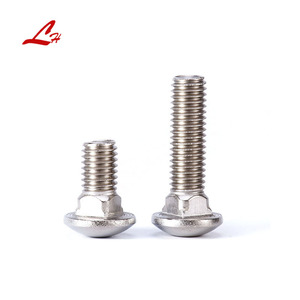






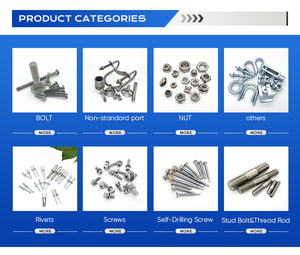
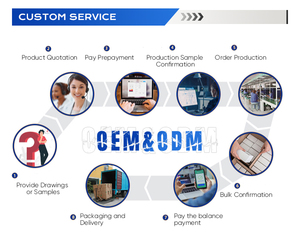



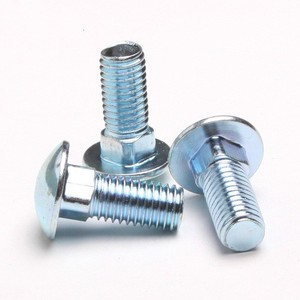

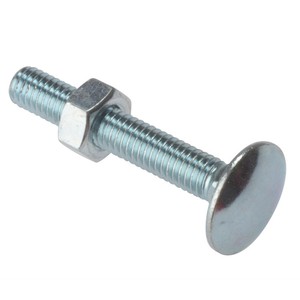
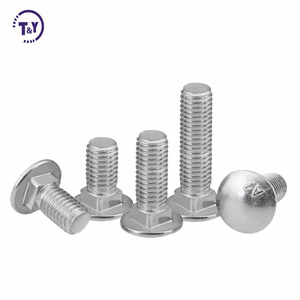



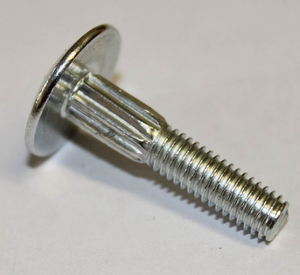


Rib-neck carriage bolts are used in many industries to ensure a secure installation. These bolts are useful in lots of applications, from construction to manufacturing. They have a distinctive rounded head and a smooth shank with a ribbed section just above the shank to help locking in place without a nut.
There are many types available, optimised for specific applications. Knowing the different types will help buyers understand which bolts are suitable for which needs.
Metal neck carriage bolts are strong structural bolts made from carbon steel or alloy steel. Metal ribbed bolts are used in high-strength applications, particularly for large wooden structures like barns or bridges. They also work well in metal construction and machinery assembly. Their resistance to deformation and fatigue makes them suitable for heavy-load situations.
Stainless steel carriage bolts offer corrosion resistance in outdoor or marine environments. They are installed in decks, piers, and outdoor structures and recommended for areas exposed to moisture. The weather-resistant properties of stainless steel make these bolts ideal for applications requiring long-term durability.
Galvanized rib-neck bolts are coated to improve corrosion resistance. They are used in outdoor construction, such as fencing, retaining walls, and deck building. The galvanized coating acts as a sacrificial layer, protecting the steel beneath it from rust in harsh environments. They are also suitable for agricultural equipment exposed to the elements.
Some carriage bolts are manufactured to meet grade specifications, such as ASTM or SAE standards. These high-performance bolts are used in critical load-bearing applications like bridges, overpasses, and high-rise buildings. Grade 5 and Grade 8 bolts are commonly used in heavy industrial settings. They are heat-treated to enhance strength and can withstand high torque without failure.
By understanding the different types of carriage bolts, buyers can select the right bolts for their business needs. Consult with suppliers for further advice on choosing suitable bolts for specific applications.
Carriage bolts have several features to consider when buying them in bulk. Buyers must prioritise the key factors to ensure the right carriage neck bolts are selected.
For clients who require durable long-lasting solutions, metal neck carriage bolts are the ideal choice. Because they are often exposed to high loads and stress, they suit applications on structural wood platforms.
The ribbed neck locking feature helps prevent the bolt from turning, allowing for a tighter and more secure installation. Therefore, purchasers must consider environmental factors when choosing the coating for neck bolts. Galvanised or stainless steel neck bolts are engineered for outdoor use and projects exposed to moisture. Galvanised bolts have a coating that protects them from rust in areas with high humidity. On the other hand, stainless steel bolts are ideal for marine environments, where corrosion resistance is critical.
Carriage bolts are widely used in woodworking, metal construction, and machinery assembly. Theatre rib neck bolts are crucial for clients in the construction industry to install structural wooden beams in building projects. In other industries, stainless steel bolts are vital for machinery assembly due to their resistance to rust, enabling smooth operations.
The same factors determine the right size and length for carriage bolts in different applications. The bolt length should be long enough to ensure a strong connection but not overly long to avoid excess protrusion. Selecting the correct diameter is also essential to prevent overloading the wood or metal getting warped.
To ensure safety and reliability, purchasing bolts that meet industry standards is essential. For example, grade-specific carriage bolts are manufactured according to ASTM and SAE guidelines. These are often required for infrastructure projects where strength and performance are critical. Buyers in regulated industries must consult with suppliers to ensure the bolts meet the necessary standards.
Neck bolts are engineered for very durable and low-maintenance use. They are designed to withstand various environmental and mechanical stresses. Their applications usually require minimal maintenance to ensure they remain effective for long years.
Neck carriage bolts have a very robust design. Most of them are made from carbon or alloy steel, offering high fatigue resistance. Galvanised or stainless steel bolts enhance durability for outdoor or marine applications. These bolts endure extreme weather, heavy loads, and constant use.
Although ribbed carriage bolts are maintenance-free, performing some preventive measures during the bolt's lifetime optimises performance. Routine inspections are essential for identifying signs of wear or corrosion and for any long-term exposure to harsh environments. Buyers can advise clients to check the bolts regularly, especially in construction, maintenance, and outdoor projects.
During the inspection, look for any visible signs of rust, especially in areas with high humidity or near coastal regions. Also, check for wear on the smooth shank portion, which is often under pressure or torque. If any of these issues are observed, the bolt should be replaced as soon as possible.
Clients should also be advised to always lube the bolts to reduce friction. This practice will help prevent galling, especially in stainless steel bolts. Applying suitable anti-seize compounds on the threads can prevent seizing and make future removals easier.
Cleaning the bolts is vital for ensuring proper lubrication and identifying any early signs of damage. Use a wire brush or appropriate cleaning method to remove any dirt, debris, or corrosion from the surface. This practice is essential when the bolts are used in machinery or construction projects, as contaminants can interfere with the operation or connection integrity.
In severe or polluted environments, such as industrial areas with chemical exposure, more frequent inspections, and maintenance may be required. Protective coatings or additional corrosion-resistant treatments may also be necessary for extending the neck bolt's life in these conditions.
At times, projects may require that the carriage bolts be replaced or repaired quickly, and understanding how to do that will save the client both time and money. The following are some DIY approaches to replacing or installing ribbed-neck carriage bolts.
The first step in replacing a carriage bolt is carefully removing the existing one. Start by using a wrench or socket to hold the smooth portion of the bolt and prevent it from turning. Next, use a power screwdriver or an impact wrench to remove the nut from the threaded end. If the nut is corroded and difficult to remove, apply penetrating oil to loosen rust and reduce friction. In some cases, cutting the bolt with a saw or bolt cutter may be necessary.
For a DIY replacement, buyers should get the same size and type of carriage bolt as the one being replaced. If the old bolt was cut, ensure the new one is long enough to re-establish the connection. Insert the new bolt's ribbed neck into the pre-drilled square hole and onto the underside of the material. The ribbing helps to prevent the bolt from rotating. Place a washer and nut onto the threaded end and use a wrench to hold the bolt while tightening the nut with a power screwdriver.
At times, repairing the carriage bolt may be necessary, while, at other times, it is infeasible. Carriage bolt replacement may not be the best short-term solution because the same bolt can be reused with proper patching. Weld them back to hold the load they did originally, or lacing them with another bolt can offer a temporary solution.
Another alternative is to use a toggle bolt, expansion bolt, or screw bolt. These types of bolts are also used for mounting objects into ceilings. Toggle and expansion bolts work well with hollow walls, while screw bolts are best for solid walls. These bolts can support reasonable loads and be a temporary solution before the desired ribbed neck bolts are sourced.
These DIY methods are useful, especially if clients have to change or fix their carriage bolts. They help to do it quickly and economically while also getting everything done without hiring professionals.
A: Rib-neck bolts are used for wooden structures, metal construction, and machinery. They have unique rounded heads, smooth shanks, and ribbed necks that prevent them from turning during installation. These features make them ideal for creating secure, load-bearing connections in various applications, such as furniture, decks, trailers, and heavy equipment.
A: Carriage bolts come in different materials for different applications. Carbon and alloy steel bolts offer high strength for structural applications. Stainless steel bolts are resistant to rust and ideal for marine and chemical exposure environments. Galvanised bolts provide corrosion resistance for outdoor use. Selecting the right material ensures durability and performance for the intended application.
A: To choose the correct size of the ribbed bolt, consider the thickness of the materials to be joined and the load that will be supported. The diameter should match the pre-drilled hole, while the length should ensure enough thread for nut engagement without excess exposed. A properly sized bolt will maintain a strong, secure connection and avoid failure.
A: Routine inspection and cleaning are essential to maintain ribbed-neck carriage bolts. In outdoor or corrosive environments, the bolts should be inspected for rust or corrosion and cleaned with a wire brush. Use anti-seize lubricants to prevent galling, especially on stainless steel bolts. For high-load applications, ensure the nuts are tightened regularly to maintain the proper torque and avoid loosening.
A: While both are types of lag bolts, the rounded, recessed heads of carriage neck bolts allow for more rotational resistance and aesthetic purposes. In contrast, hexagonal bolts provide a more straightforward wrenching surface. Carriage bolts are predominantly used for wooden or manufactured structures, while hex bolts are common in metal construction.